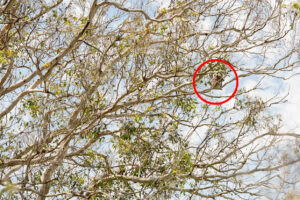URGENT UPDATE: Renowned graphic designer Joe Caroff, the mastermind behind the iconic 007 gun logo and numerous classic film posters, has passed away at the age of 103. Caroff died on October 8, 2023, just one day shy of his 104th birthday, after spending recent days in hospice care at his home in Manhattan, as confirmed by his sons, Peter and Michael Caroff, to the New York Times.
This news resonates deeply within the film and design communities, as Caroff’s work defined visual storytelling for generations. He was responsible for over 300 campaigns throughout his illustrious career, creating posters for legendary films such as West Side Story (1961), A Hard Day’s Night (1964), and Cabaret (1972). His most memorable designs not only captured the essence of the films they represented but also showcased his innovative approach to typography and composition.
Caroff’s journey began when he was commissioned to design the poster for West Side Story. He cleverly scuffed the lettering to evoke a sense of roughness, integrating fire escapes and dynamic dancers into the design. This creative flair became a hallmark of his work. His collaboration with filmmaker Woody Allen resulted in the striking poster for Manhattan (1979), where Caroff artfully arranged silhouettes of New York skyscrapers—including the Empire State Building and the twin towers—to spell out the film’s title.
In a twist of fate, Caroff’s most famous work, the 007 logo, was conceived almost spontaneously. Tasked with creating a letterhead for the publicity of the first James Bond film, Dr. No (1962), Caroff recalled, “I knew [Bond’s] designation was 007, and when I wrote the stem of the seven, I thought, ‘That looks like the handle of a gun to me.’” This moment of creativity would later become a cultural touchstone. Despite being paid only $300 for this iconic design, Caroff’s contribution to the Bond franchise remained largely uncredited throughout his career.
Beyond posters, Caroff also made significant contributions to film through his work on opening title sequences, including those for A Bridge Too Far (1977) and The Last Temptation of Christ (1988). He aimed to infuse his work with “effervescence,” as he described in the 2022 TCM documentary By Design: The Joe Caroff Story. “I want it to have a life; it doesn’t want to lie there flat,” he stated, reflecting his passion for vibrant, impactful design.
Caroff’s passing marks the end of an era for film and graphic design. He leaves behind a legacy that shaped how we perceive film marketing and visual arts. His work continues to inspire new generations of designers and filmmakers alike.
As tributes pour in from industry peers and fans, the creative community mourns the loss of a true pioneer. The impact of Joe Caroff’s designs will undoubtedly resonate for years to come, reminding us of the power of visual art in storytelling.
Stay tuned for more updates on this developing story as the film world honors the legacy of Joe Caroff, a designer whose work transcended time and continues to influence the industry today.






